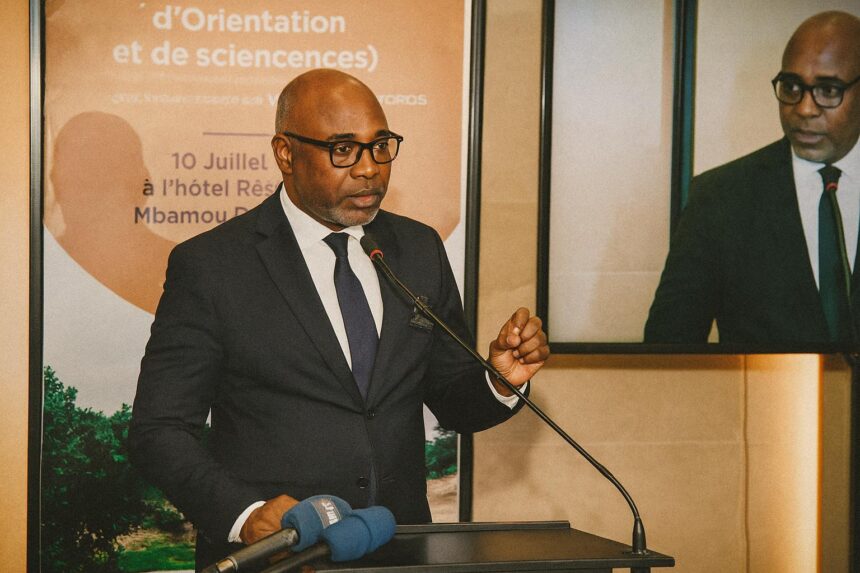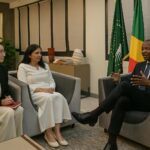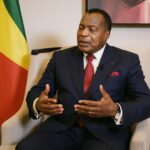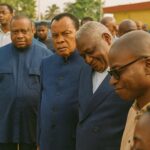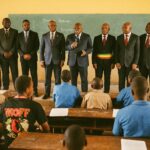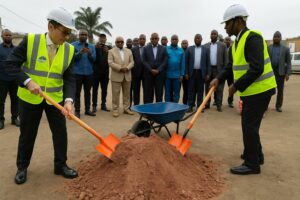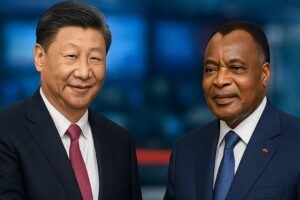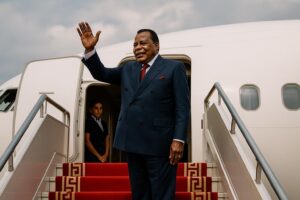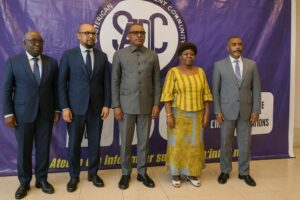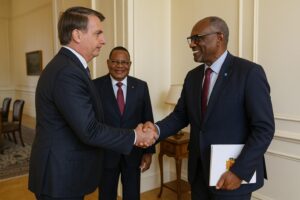Debt conversion as a diplomatic instrument
The Contrat de désendettement et de développement, better known by its acronym C2D, occupies an unusual niche in the international financial architecture. Conceived by Paris in the early 2000s, the mechanism transforms bilateral debt service into grants earmarked for development projects, thereby aligning macro-economic relief with sectoral investments. Brazzaville joined this club in 2010, signing an initial €80 million tranche, followed by a second worth €149 million in 2014. The combined envelope of €229 million—approximately CFA 150.2 billion—has since been the focal point of Franco-Congolese economic dialogue (AFD portfolio review, June 2025).
- Debt conversion as a diplomatic instrument
- Focus on infrastructure, human capital and the green agenda
- From approved budgets to tangible results
- Inflationary headwinds and administrative latency
- Searching for complementary finance
- Diplomatic symbolism and strategic continuity
- Looking ahead to C2D III
- A measured yet optimistic verdict
Focus on infrastructure, human capital and the green agenda
In line with priorities articulated in Congo’s Plan national de développement and France’s 2023 Indo-Pacific-Africa Strategy, three sectors emerged as consensual beneficiaries: physical infrastructure, human capital formation, and the environmental-agricultural nexus. The Brazzaville Corniche, the emblematic forest-landscape management initiative in the North, and the modernisation of water facilities at the Brazzaville University Hospital illustrate the infrastructural strand. On the social front, programmes such as Telema and Mossala aim to recalibrate vocational training and employment, while university-level support has targeted laboratory upgrades and digital campuses. Environmental allocations underpin agroforestry pilots and flood-mitigation works in Pointe-Noire, dovetailing with Congo’s commitments under the Central African Forest Initiative (UN-DESA policy brief, April 2025).
From approved budgets to tangible results
During the eighth session of the Comité d’orientation et de suivi, hosted on 10 July 2025 at the Radisson Blu in Brazzaville, Finance Minister Christian Yoka reported that the entire envelope has now been contractually committed. Five projects are fully delivered, seven remain under execution, two are in administrative closure, and four are expected to reach completion in 2026. A further quartet—Mossala, Telema, the Pointe-Noire sanitation scheme and a cross-city flood-management plan—carries a closing horizon of 2029. Civil-society delegates lauded the promenade along the Congo River as a visible dividend of the partnership, while noting that rural electrification and agricultural extension schemes have generated quieter yet significant community-level gains (Congolese Civil Society Communiqué, July 2025).
Inflationary headwinds and administrative latency
Progress, however, is not immune to macro-economic turbulence. Ambassador Claire Bodonyi, co-chairing the session, cautioned that inflation affecting construction inputs could exhaust planned budgets before final works are certified. The comment resonates with regional cost-escalation data published by the African Development Bank last quarter. Domestic administrative procedures have also lengthened project cycles; public-procurement clearances, land-title verifications and multi-agency audits extend timelines far beyond the theoretical framework set out in the original conventions. Yet both delegations underscored that such bottlenecks, though real, have triggered institutional learning rather than political acrimony.
Searching for complementary finance
To bridge emerging funding gaps, the Comité endorsed the redeployment of residual study funds managed by the Bank of Central African States, while mandating the exploration of co-financing with the European Union’s Global Gateway and the Saudi Fund for Development. Preliminary consultations suggest that blended-finance structures could underwrite remaining phases of the Pointe-Noire drainage works and expand agro-ecological trials in Sangha. The Ministry of Finance has simultaneously tabled a proposal for local-currency bonds tailored to institutional investors, hoping to secure maintenance budgets so that completed assets do not succumb to the familiar ‘post-project decay’ syndrome.
Diplomatic symbolism and strategic continuity
Beyond the spreadsheets, the C2D process functions as a barometer of Franco-Congolese relations. President Denis Sassou Nguesso’s participation in the Paris Peace Forum last November, where he highlighted the Corniche as an urban-renewal exemplar, underscored the initiative’s soft-power dimension. French officials, for their part, view the mechanism as proof that historical partnerships can evolve into mutually reinforcing, forward-looking alliances. The scheduled mid-term review in 2026 is therefore framed less as a verdict and more as an opportunity to recalibrate priorities in light of the global energy transition and Congo’s bid to diversify away from hydrocarbon dependence.
Looking ahead to C2D III
With the second C2D nearing its contractual sunset, discreet conversations have already begun regarding a possible third cycle. Sources within the Agence française de développement hint at a thematic pivot toward digital infrastructure and climate resilience, areas where Congo has articulated ambitious—but under-funded—targets. While no figure has been floated publicly, analysts at the Dakar-based West Africa Economic Observatory forecast a potential envelope of between €180 million and €220 million, contingent upon macro-fiscal indicators and ongoing International Monetary Fund consultations. For Brazzaville, a renewed C2D would not merely finance projects; it would reinforce investor confidence at a delicate juncture marked by volatile commodity prices.
A measured yet optimistic verdict
After fifteen years of experimentation, the C2D partnership offers a nuanced record: execution lags and cost overruns coexist with iconic infrastructure and budding social programmes. Crucially, dialogue remains cordial, solutions are being sought within multilateral frameworks, and the political leadership of both nations continues to frame the mechanism as a shared success. For the community of diplomats and policy-makers observing Brazzaville, the overarching lesson is less about engineering or procurement and more about the diplomatic utility of debt conversion in sustaining long-term strategic relationships.

